-

Jul
19
Summary: Lunch & Learn - Reviewing for a Scientific Journal

On July 19, graduate students and new faculty members gathered for a Lunch & Learn with Dr. Elisabeth Huff-Lonergan, current Editor-in-Chief of the Journal of Animal Science, and Dr. Steven Zinn, former Editor-in-Chief of the Journal of Animal Science.
Read more
-

Jul
19
Summary: Companion Animal II Symposium

On Wednesday, July 19, the Companion Animal Symposium featured an awards talk by Dr. Erin Perry. At the beginning of the session, Perry, a professor at Southern Illinois University, was presented with the Corbin Award in Companion Animal Biology. She then shared her current research regarding canine health and hygiene within the One Health lens.
Read more
-

Jul
19
Summary: CSAS Symposium II

On the afternoon of July 18, the CSAS sponsored a symposium dedicated to exotic species as meat protein alternatives. Alternatives discussed included water buffalo and capybara, as well as bison. Dr. Jayson Galbraith, a livestock specialist at Alberta Agriculture and Irrigation, discussed the wide variety of meats consumed worldwide, consumption trends, and the importance of understanding characteristics of specific meats.
Read more
-

Jul
19
Summary: Animal Well-Being & Behavior Symposium

As the ASAS Annual Meeting continued through the afternoon of its third day, there were a wide variety of sessions for attendees to choose from, including beef reproduction, growth, and development, companion animals, meat protein alternatives, and more. The Animal Well-Being and Behavior Symposium focused on production animal welfare and featured an awards talk by Dr. Jay Johnson (USDA). Johnson, who was awarded the Early Career Achievement Award by ASAS, discussed improving swine heat stress resilience in order to optimize productivity and welfare in a changing climate.
Read more
-

Jul
18
Summary: ASAS Diversity, Equity, and Inclusion Symposium

During the morning session of the third day of the ASAS Annual Meeting, Dr. Shawn Archibeque led the Diversity, Equity, and Inclusion Symposium, featuring presentations by Dr. Teresa Maria Linda Scholz (New Mexico State University), Aaron Sales (New Mexico State University), and Dr. Nicole Tillquist (UConn).
Read more
-

Jul
18
Summary: Small Ruminant Symposium

On the afternoon of July 17, the Small Ruminant Symposium was held as part of the ASAS Annual Meeting. The focus of this session was precision sheep management and moving from research to application to better support the industry.
Read more
-

Jul
17
Summary: Physiology and Endocrinology Symposium

As the ASAS Annual Meeting headed into full swing, the Monday morning session featured a discussion on Physiology and Endocrinology. The symposium entitled “An Update on the Brain,” focused on new insights into the inner workings of the hypothalamus and pituitary glands.
Read more
-

Jul
17
Summary: WSASAS Beef Symposium: Climate Adaptation Strategies for the Beef Industry of the Great Plains and Western US

On Sunday, July 15, the ASAS Annual Meeting kicked off in Albuquerque, New Mexico with a Beef Symposium sponsored by the Western Section. The session was led by Dr. Glenn Duff of New Mexico State and focused on climate adaptation strategies for the beef industry of the Great Plains and Western United States.
Read more
-

Jul
12
Interpretive Summary: A systems approach to evaluate nitrogen utilization efficiency and environmental impacts of swine growing-finishing feeding programs in U.S. pork production systems
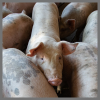
Four growing-finishing feeding programs consisting of typical corn-soybean meal (CSBM) diets, low protein CSBM diets containing supplemental crystalline amino acids (LP), CSBM diets containing 30% corn dried distillers grains with solubles (DDGS), and DDGS diets containing supplemental crystalline Ile, Val, and Trp were evaluated to compare their effects on growth performance, carcass composition, nitrogen and phosphorus utilization efficiency, and several environmental impact measures.
Read more
-

Jul
12
Infographic: A Holistic Perspective of the Societal Relevance of Beef Production and Its Impacts On Climate Change
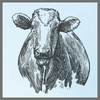
This infographic highlights a recently published paper titled “A Holistic Perspective of the Societal Relevance of Beef Production and Its Impacts On Climate Change” (Tedeschi and Beauchemin, 2023). A key component of the paper is the discussion about the relevance of the U.S. beef cattle industry to society and on its contribution to greenhouse gas emissions.
Read more
-

Jul
12
Interpretive Summary: Substrate degradation and postbiotic analysis of alternative fiber ingredients fermented using an in vitro canine fecal inoculum model

Fibers fermented in the gut result in the production of short-chain fatty acids (SCFA) acetate, propionate, and butyrate. These postbiotic compounds, particularly butyrate, play an important role in colonic and host health. Fibers not degraded by the microbiota aid in stool formation and promote laxation.
Read more
-

Jul
12
Interpretive Summary: Heritability and genetic trend of body weight in dogs of different breeds in Sweden

High body weight in dogs is often considered to cause problems, for instance, resulting in hip and elbow diseases. Furthermore, there is a huge variation in body conformation and size between different dog breeds, which is related to breeding for specific appearances and genetic traits.
Read more
-

Jul
12
Interpretive Summary: Excavation and characterization of key circRNAs for milk fat percentage in Holstein cattle
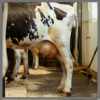
Milk is an important food source, consisting of a complex mixture of lipids, proteins, carbohydrates, and other factors, of which milk fat not only affects the flavor and nutritional value of milk but also plays an important role in the metabolism of nutrients during human growth and development.
Read more
-

Jul
12
Interpretive Summary: Genetic associations between human-directed behavior and intraspecific social aggression in growing pigs
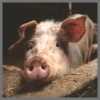
We estimated genetic and phenotypic correlations and heritabilities for temperament indicators in growing pigs such as fearfulness (i.e., vocal and physical withdrawal response to an approaching human while isolated in an arena; attempts to escape from a weigh crate); boldness (i.e., biting, following or nosing a human walking inside their home pen) and aggression (i.e., skin lesions). Our results indicate that the studied traits were heritable, and some of these traits could potentially be useful for genetic selection.
Read more
-

Jul
12
Interpretive Summary: Monoammonium glycyrrhizinate improves antioxidant capacity of calf intestinal epithelial cells exposed to heat stress in vitro

In this study, we investigated the antioxidant effect of monoammonium glycyrrhizinate (MAG) on calf intestinal epithelial cells (CIECs) exposed to heat stress in vitro. Calves are sensitive to heat stress, and high temperatures can stimulate heat stress and produce a large number of reactive oxygen species (ROS) to induce oxidative stress.
Read more
-

Jul
06
Infographic: Conceptualization and implementation of the Fiber Utilization and Cell Wall Constituents Symposium
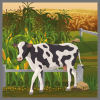
In 1991, researchers in animal and plant sciences met at the International Symposium on Forage Cell Wall Structure and Digestibility in Madison, WI (Front Matter, 1993). At that meeting, seven sessions were organized, representing some of the biggest names in forages and ruminant nutrition, to discuss and debate the cell wall, its role in ruminant nutrition, and the advances made in the science of forage nutrition.
Read more
-

Jul
06
Interpretive Summary: Forages and pastures symposium: forage biodegradation: advances in ruminal microbial ecology
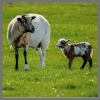
Forage degradation in the rumen is critical to producing ruminant animals. For many years, scientists were limited to biochemical techniques to understand how ruminal microbes degraded forage, impairing our understanding of which microbes were involved with degrading which forage components.
Read more
-

Jul
06
Interpretive Summary: Mineral composition of serially slaughtered Holstein steers supplemented with zilpaterol hydrochloride
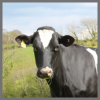
Mineral requirements for feedlot cattle are largely based on measured mineral concentration in the body at harvest. Fairly extensive research has been done quantifying Ca and P in the body of cattle, but data on Mg, K, and S are sparse. Serial harvest experiments are expensive and labor intensive and therefore not conducted frequently. A group of 115 Holstein steers was fed a finishing diet with serial harvest every 28 d.
Read more
-

Jul
06
Interpretive Summary: Effects of starch sources varying in particle sizes on ruminal fermentation, nutrient flow, starch digestibility, and lactation performance of dairy cows

Starch digestibility varies greatly depending on starch source (SS), grain processing, and potentially interactions between these factors. Four ruminally cannulated lactating Holstein cows were fed a total mixed ration that varied in SS and particle sizes (PS) to evaluate the interactions between SS and PS on ruminal fermentation, nutrient flow, starch digestibility, and lactation performance of dairy cows.
Read more
-

Jul
06
Interpretive Summary: Enzymatic degradation of ochratoxin A in the gastrointestinal tract of piglets
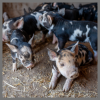
Ochratoxin A (OTA) is a potent toxin frequently present in animal feeds, which accumulates in the animal tissues for human consumption. This results in critical animal welfare issues, as well as food safety issues. To the best of our knowledge, the present study is the first to show that OTA can be degraded by an enzyme supplemented with pigs’ feed.
Read more
 JulSummary: Lunch & Learn - Reviewing for a Scientific Journal
JulSummary: Lunch & Learn - Reviewing for a Scientific Journal On July 19, graduate students and new faculty members gathered for a Lunch & Learn with Dr. Elisabeth Huff-Lonergan, current Editor-in-Chief of the Journal of Animal Science, and Dr. Steven Zinn, former Editor-in-Chief of the Journal of Animal Science.
On July 19, graduate students and new faculty members gathered for a Lunch & Learn with Dr. Elisabeth Huff-Lonergan, current Editor-in-Chief of the Journal of Animal Science, and Dr. Steven Zinn, former Editor-in-Chief of the Journal of Animal Science. JulSummary: Companion Animal II Symposium
JulSummary: Companion Animal II Symposium On Wednesday, July 19, the Companion Animal Symposium featured an awards talk by Dr. Erin Perry. At the beginning of the session, Perry, a professor at Southern Illinois University, was presented with the Corbin Award in Companion Animal Biology. She then shared her current research regarding canine health and hygiene within the One Health lens.
On Wednesday, July 19, the Companion Animal Symposium featured an awards talk by Dr. Erin Perry. At the beginning of the session, Perry, a professor at Southern Illinois University, was presented with the Corbin Award in Companion Animal Biology. She then shared her current research regarding canine health and hygiene within the One Health lens. JulSummary: CSAS Symposium II
JulSummary: CSAS Symposium II On the afternoon of July 18, the CSAS sponsored a symposium dedicated to exotic species as meat protein alternatives. Alternatives discussed included water buffalo and capybara, as well as bison. Dr. Jayson Galbraith, a livestock specialist at Alberta Agriculture and Irrigation, discussed the wide variety of meats consumed worldwide, consumption trends, and the importance of understanding characteristics of specific meats.
On the afternoon of July 18, the CSAS sponsored a symposium dedicated to exotic species as meat protein alternatives. Alternatives discussed included water buffalo and capybara, as well as bison. Dr. Jayson Galbraith, a livestock specialist at Alberta Agriculture and Irrigation, discussed the wide variety of meats consumed worldwide, consumption trends, and the importance of understanding characteristics of specific meats. JulSummary: Animal Well-Being & Behavior Symposium
JulSummary: Animal Well-Being & Behavior Symposium As the ASAS Annual Meeting continued through the afternoon of its third day, there were a wide variety of sessions for attendees to choose from, including beef reproduction, growth, and development, companion animals, meat protein alternatives, and more. The Animal Well-Being and Behavior Symposium focused on production animal welfare and featured an awards talk by Dr. Jay Johnson (USDA). Johnson, who was awarded the Early Career Achievement Award by ASAS, discussed improving swine heat stress resilience in order to optimize productivity and welfare in a changing climate.
As the ASAS Annual Meeting continued through the afternoon of its third day, there were a wide variety of sessions for attendees to choose from, including beef reproduction, growth, and development, companion animals, meat protein alternatives, and more. The Animal Well-Being and Behavior Symposium focused on production animal welfare and featured an awards talk by Dr. Jay Johnson (USDA). Johnson, who was awarded the Early Career Achievement Award by ASAS, discussed improving swine heat stress resilience in order to optimize productivity and welfare in a changing climate. JulSummary: ASAS Diversity, Equity, and Inclusion Symposium
JulSummary: ASAS Diversity, Equity, and Inclusion Symposium During the morning session of the third day of the ASAS Annual Meeting, Dr. Shawn Archibeque led the Diversity, Equity, and Inclusion Symposium, featuring presentations by Dr. Teresa Maria Linda Scholz (New Mexico State University), Aaron Sales (New Mexico State University), and Dr. Nicole Tillquist (UConn).
During the morning session of the third day of the ASAS Annual Meeting, Dr. Shawn Archibeque led the Diversity, Equity, and Inclusion Symposium, featuring presentations by Dr. Teresa Maria Linda Scholz (New Mexico State University), Aaron Sales (New Mexico State University), and Dr. Nicole Tillquist (UConn). JulSummary: Small Ruminant Symposium
JulSummary: Small Ruminant Symposium On the afternoon of July 17, the Small Ruminant Symposium was held as part of the ASAS Annual Meeting. The focus of this session was precision sheep management and moving from research to application to better support the industry.
On the afternoon of July 17, the Small Ruminant Symposium was held as part of the ASAS Annual Meeting. The focus of this session was precision sheep management and moving from research to application to better support the industry. JulSummary: Physiology and Endocrinology Symposium
JulSummary: Physiology and Endocrinology Symposium As the ASAS Annual Meeting headed into full swing, the Monday morning session featured a discussion on Physiology and Endocrinology. The symposium entitled “An Update on the Brain,” focused on new insights into the inner workings of the hypothalamus and pituitary glands.
As the ASAS Annual Meeting headed into full swing, the Monday morning session featured a discussion on Physiology and Endocrinology. The symposium entitled “An Update on the Brain,” focused on new insights into the inner workings of the hypothalamus and pituitary glands. JulSummary: WSASAS Beef Symposium: Climate Adaptation Strategies for the Beef Industry of the Great Plains and Western US
JulSummary: WSASAS Beef Symposium: Climate Adaptation Strategies for the Beef Industry of the Great Plains and Western US On Sunday, July 15, the ASAS Annual Meeting kicked off in Albuquerque, New Mexico with a Beef Symposium sponsored by the Western Section. The session was led by Dr. Glenn Duff of New Mexico State and focused on climate adaptation strategies for the beef industry of the Great Plains and Western United States.
On Sunday, July 15, the ASAS Annual Meeting kicked off in Albuquerque, New Mexico with a Beef Symposium sponsored by the Western Section. The session was led by Dr. Glenn Duff of New Mexico State and focused on climate adaptation strategies for the beef industry of the Great Plains and Western United States. JulInterpretive Summary: A systems approach to evaluate nitrogen utilization efficiency and environmental impacts of swine growing-finishing feeding programs in U.S. pork production systems
JulInterpretive Summary: A systems approach to evaluate nitrogen utilization efficiency and environmental impacts of swine growing-finishing feeding programs in U.S. pork production systems Four growing-finishing feeding programs consisting of typical corn-soybean meal (CSBM) diets, low protein CSBM diets containing supplemental crystalline amino acids (LP), CSBM diets containing 30% corn dried distillers grains with solubles (DDGS), and DDGS diets containing supplemental crystalline Ile, Val, and Trp were evaluated to compare their effects on growth performance, carcass composition, nitrogen and phosphorus utilization efficiency, and several environmental impact measures.
Four growing-finishing feeding programs consisting of typical corn-soybean meal (CSBM) diets, low protein CSBM diets containing supplemental crystalline amino acids (LP), CSBM diets containing 30% corn dried distillers grains with solubles (DDGS), and DDGS diets containing supplemental crystalline Ile, Val, and Trp were evaluated to compare their effects on growth performance, carcass composition, nitrogen and phosphorus utilization efficiency, and several environmental impact measures. JulInfographic: A Holistic Perspective of the Societal Relevance of Beef Production and Its Impacts On Climate Change
JulInfographic: A Holistic Perspective of the Societal Relevance of Beef Production and Its Impacts On Climate Change This infographic highlights a recently published paper titled “A Holistic Perspective of the Societal Relevance of Beef Production and Its Impacts On Climate Change” (Tedeschi and Beauchemin, 2023). A key component of the paper is the discussion about the relevance of the U.S. beef cattle industry to society and on its contribution to greenhouse gas emissions.
This infographic highlights a recently published paper titled “A Holistic Perspective of the Societal Relevance of Beef Production and Its Impacts On Climate Change” (Tedeschi and Beauchemin, 2023). A key component of the paper is the discussion about the relevance of the U.S. beef cattle industry to society and on its contribution to greenhouse gas emissions. JulInterpretive Summary: Substrate degradation and postbiotic analysis of alternative fiber ingredients fermented using an in vitro canine fecal inoculum model
JulInterpretive Summary: Substrate degradation and postbiotic analysis of alternative fiber ingredients fermented using an in vitro canine fecal inoculum model Fibers fermented in the gut result in the production of short-chain fatty acids (SCFA) acetate, propionate, and butyrate. These postbiotic compounds, particularly butyrate, play an important role in colonic and host health. Fibers not degraded by the microbiota aid in stool formation and promote laxation.
Fibers fermented in the gut result in the production of short-chain fatty acids (SCFA) acetate, propionate, and butyrate. These postbiotic compounds, particularly butyrate, play an important role in colonic and host health. Fibers not degraded by the microbiota aid in stool formation and promote laxation. JulInterpretive Summary: Heritability and genetic trend of body weight in dogs of different breeds in Sweden
JulInterpretive Summary: Heritability and genetic trend of body weight in dogs of different breeds in Sweden High body weight in dogs is often considered to cause problems, for instance, resulting in hip and elbow diseases. Furthermore, there is a huge variation in body conformation and size between different dog breeds, which is related to breeding for specific appearances and genetic traits.
High body weight in dogs is often considered to cause problems, for instance, resulting in hip and elbow diseases. Furthermore, there is a huge variation in body conformation and size between different dog breeds, which is related to breeding for specific appearances and genetic traits. JulInterpretive Summary: Excavation and characterization of key circRNAs for milk fat percentage in Holstein cattle
JulInterpretive Summary: Excavation and characterization of key circRNAs for milk fat percentage in Holstein cattle Milk is an important food source, consisting of a complex mixture of lipids, proteins, carbohydrates, and other factors, of which milk fat not only affects the flavor and nutritional value of milk but also plays an important role in the metabolism of nutrients during human growth and development.
Milk is an important food source, consisting of a complex mixture of lipids, proteins, carbohydrates, and other factors, of which milk fat not only affects the flavor and nutritional value of milk but also plays an important role in the metabolism of nutrients during human growth and development. JulInterpretive Summary: Genetic associations between human-directed behavior and intraspecific social aggression in growing pigs
JulInterpretive Summary: Genetic associations between human-directed behavior and intraspecific social aggression in growing pigs We estimated genetic and phenotypic correlations and heritabilities for temperament indicators in growing pigs such as fearfulness (i.e., vocal and physical withdrawal response to an approaching human while isolated in an arena; attempts to escape from a weigh crate); boldness (i.e., biting, following or nosing a human walking inside their home pen) and aggression (i.e., skin lesions). Our results indicate that the studied traits were heritable, and some of these traits could potentially be useful for genetic selection.
We estimated genetic and phenotypic correlations and heritabilities for temperament indicators in growing pigs such as fearfulness (i.e., vocal and physical withdrawal response to an approaching human while isolated in an arena; attempts to escape from a weigh crate); boldness (i.e., biting, following or nosing a human walking inside their home pen) and aggression (i.e., skin lesions). Our results indicate that the studied traits were heritable, and some of these traits could potentially be useful for genetic selection. JulInterpretive Summary: Monoammonium glycyrrhizinate improves antioxidant capacity of calf intestinal epithelial cells exposed to heat stress in vitro
JulInterpretive Summary: Monoammonium glycyrrhizinate improves antioxidant capacity of calf intestinal epithelial cells exposed to heat stress in vitro In this study, we investigated the antioxidant effect of monoammonium glycyrrhizinate (MAG) on calf intestinal epithelial cells (CIECs) exposed to heat stress in vitro. Calves are sensitive to heat stress, and high temperatures can stimulate heat stress and produce a large number of reactive oxygen species (ROS) to induce oxidative stress.
In this study, we investigated the antioxidant effect of monoammonium glycyrrhizinate (MAG) on calf intestinal epithelial cells (CIECs) exposed to heat stress in vitro. Calves are sensitive to heat stress, and high temperatures can stimulate heat stress and produce a large number of reactive oxygen species (ROS) to induce oxidative stress. JulInfographic: Conceptualization and implementation of the Fiber Utilization and Cell Wall Constituents Symposium
JulInfographic: Conceptualization and implementation of the Fiber Utilization and Cell Wall Constituents Symposium In 1991, researchers in animal and plant sciences met at the International Symposium on Forage Cell Wall Structure and Digestibility in Madison, WI (Front Matter, 1993). At that meeting, seven sessions were organized, representing some of the biggest names in forages and ruminant nutrition, to discuss and debate the cell wall, its role in ruminant nutrition, and the advances made in the science of forage nutrition.
In 1991, researchers in animal and plant sciences met at the International Symposium on Forage Cell Wall Structure and Digestibility in Madison, WI (Front Matter, 1993). At that meeting, seven sessions were organized, representing some of the biggest names in forages and ruminant nutrition, to discuss and debate the cell wall, its role in ruminant nutrition, and the advances made in the science of forage nutrition. JulInterpretive Summary: Forages and pastures symposium: forage biodegradation: advances in ruminal microbial ecology
JulInterpretive Summary: Forages and pastures symposium: forage biodegradation: advances in ruminal microbial ecology Forage degradation in the rumen is critical to producing ruminant animals. For many years, scientists were limited to biochemical techniques to understand how ruminal microbes degraded forage, impairing our understanding of which microbes were involved with degrading which forage components.
Forage degradation in the rumen is critical to producing ruminant animals. For many years, scientists were limited to biochemical techniques to understand how ruminal microbes degraded forage, impairing our understanding of which microbes were involved with degrading which forage components. JulInterpretive Summary: Mineral composition of serially slaughtered Holstein steers supplemented with zilpaterol hydrochloride
JulInterpretive Summary: Mineral composition of serially slaughtered Holstein steers supplemented with zilpaterol hydrochloride Mineral requirements for feedlot cattle are largely based on measured mineral concentration in the body at harvest. Fairly extensive research has been done quantifying Ca and P in the body of cattle, but data on Mg, K, and S are sparse. Serial harvest experiments are expensive and labor intensive and therefore not conducted frequently. A group of 115 Holstein steers was fed a finishing diet with serial harvest every 28 d.
Mineral requirements for feedlot cattle are largely based on measured mineral concentration in the body at harvest. Fairly extensive research has been done quantifying Ca and P in the body of cattle, but data on Mg, K, and S are sparse. Serial harvest experiments are expensive and labor intensive and therefore not conducted frequently. A group of 115 Holstein steers was fed a finishing diet with serial harvest every 28 d. JulInterpretive Summary: Effects of starch sources varying in particle sizes on ruminal fermentation, nutrient flow, starch digestibility, and lactation performance of dairy cows
JulInterpretive Summary: Effects of starch sources varying in particle sizes on ruminal fermentation, nutrient flow, starch digestibility, and lactation performance of dairy cows Starch digestibility varies greatly depending on starch source (SS), grain processing, and potentially interactions between these factors. Four ruminally cannulated lactating Holstein cows were fed a total mixed ration that varied in SS and particle sizes (PS) to evaluate the interactions between SS and PS on ruminal fermentation, nutrient flow, starch digestibility, and lactation performance of dairy cows.
Starch digestibility varies greatly depending on starch source (SS), grain processing, and potentially interactions between these factors. Four ruminally cannulated lactating Holstein cows were fed a total mixed ration that varied in SS and particle sizes (PS) to evaluate the interactions between SS and PS on ruminal fermentation, nutrient flow, starch digestibility, and lactation performance of dairy cows. JulInterpretive Summary: Enzymatic degradation of ochratoxin A in the gastrointestinal tract of piglets
JulInterpretive Summary: Enzymatic degradation of ochratoxin A in the gastrointestinal tract of piglets Ochratoxin A (OTA) is a potent toxin frequently present in animal feeds, which accumulates in the animal tissues for human consumption. This results in critical animal welfare issues, as well as food safety issues. To the best of our knowledge, the present study is the first to show that OTA can be degraded by an enzyme supplemented with pigs’ feed.
Ochratoxin A (OTA) is a potent toxin frequently present in animal feeds, which accumulates in the animal tissues for human consumption. This results in critical animal welfare issues, as well as food safety issues. To the best of our knowledge, the present study is the first to show that OTA can be degraded by an enzyme supplemented with pigs’ feed.



